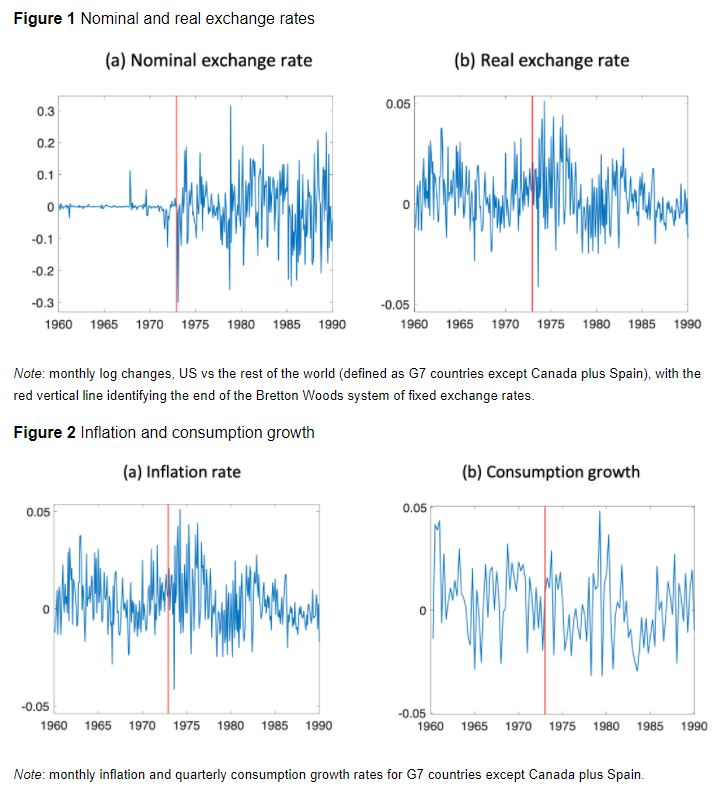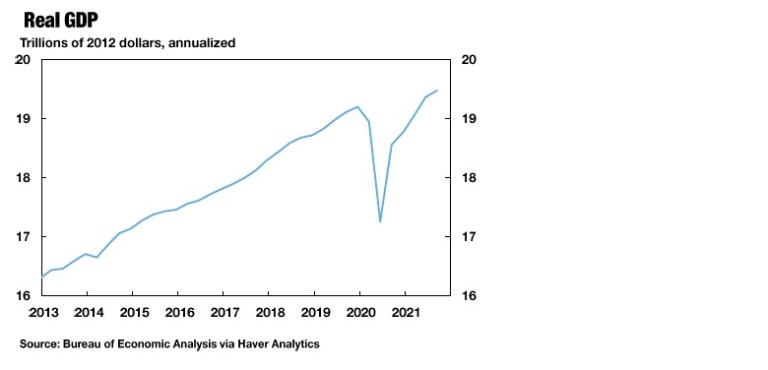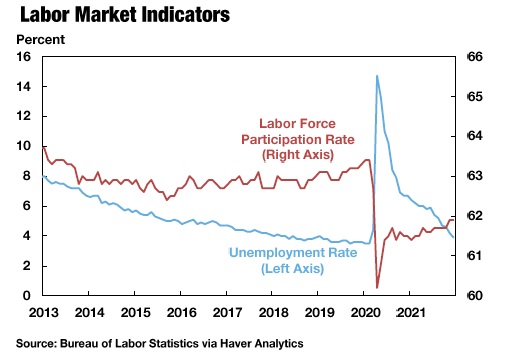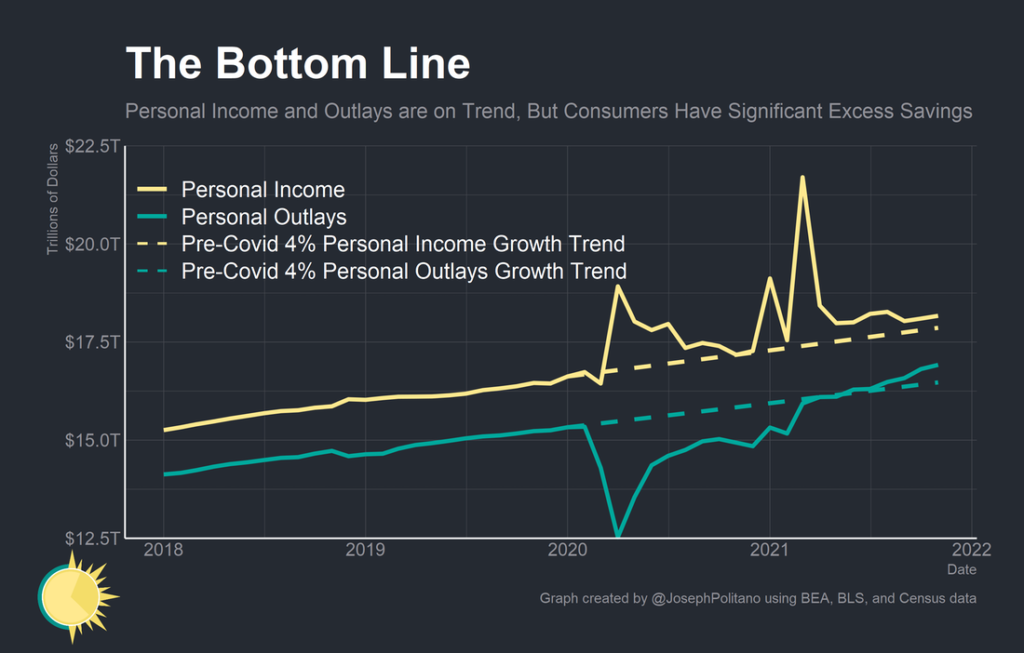Monday, January 17, 2022
The Mussa puzzle and the optimal exchange rate policy
From a VoxEU post by Oleg Itskhoki and Dmitry Mukhin:
“The Mussa puzzle refers to the existence of a large and sudden jump in the volatility of the real exchange rate after the adoption of a floating exchange rate regime in 1973. It is a central piece of evidence in favour of monetary non-neutrality. In contrast to conventional wisdom, this column argues that the puzzle cannot be explained with sticky prices, and instead provides strong evidence in favour of monetary transmission via the financial market. This has important consequences for the design of optimal monetary and exchange rate policy.
What is the most convincing evidence that monetary shocks affect real outcomes? When Nakamura and Steinsson (2018) surveyed prominent macroeconomists, “the three most common answers were: the evidence presented in Friedman and Schwartz (1963) regarding the role of monetary policy in the severity of the Great Depression; the Volcker disinflation of the early 1980s and accompanying twin recession; and the sharp break in the volatility of the US real exchange rate accompanying the breakdown of the Bretton Woods System of fixed exchange rates in 1973”. This third fact, famously documented by Mussa (1986), is especially appealing as it relies on a simple and clear identification of the causal real effect from a shift in monetary policy: a large and discontinuous change in the nominal exchange rate process makes it hard to attribute the increased volatility of the real exchange rate to any other factors (see Figure 1)
What is missing from this narrative, however, is that there was no simultaneous change in the properties of other macro variables – neither nominal like inflation, nor real like consumption and output (Baxter and Stockman 1989, Flood and Rose 1995, and Figure 2). One could interpret this as an extreme form of neutrality, where a major shift in the monetary regime, which increases the volatility of the nominal exchange rate by an order of magnitude, does not affect the equilibrium properties of any macro variables, apart from the real exchange rate. In fact, this is a considerably more puzzling part of the larger set of ‘Mussa facts’ summarised in Figures 1 and 2. In a recent paper, we argue that this evidence points to a particular unconventional transmission mechanism of monetary policy and has important normative implications for both open and closed economies (Itskhoki and Mukhin 2021b).”

Continue reading here.
From a VoxEU post by Oleg Itskhoki and Dmitry Mukhin:
“The Mussa puzzle refers to the existence of a large and sudden jump in the volatility of the real exchange rate after the adoption of a floating exchange rate regime in 1973. It is a central piece of evidence in favour of monetary non-neutrality. In contrast to conventional wisdom, this column argues that the puzzle cannot be explained with sticky prices,
Posted by at 9:51 AM
Labels: Macro Demystified
The Agglomeration of Urban Amenities: Evidence from Milan Restaurants
From a NBER paper by Marco Leonardi & Enrico Moretti:
“In many cities, restaurants and retail establishments are spatially concentrated. Economists have long recognized the presence of demand externalities that arise from spatial agglomeration as a possible explanation, but empirically identifying this type of spillovers has proven difficult. We test for the presence of agglomeration spillovers in Milan’s restaurant sector using the abolition of a unique regulation that until recently restricted where new restaurants could locate. Before 2005, Milan mandated a minimum distance between restaurants that kept the spatial distribution of restaurants artificially uniform. As a consequence, restaurants were evenly distributed across neighborhoods. The regulation was abolished in 2005 by a nationwide reform that allowed new restaurants to locate anywhere in the city. Using administrative data on the universe of restaurants and retail establishments in Milan between 2000 and 2012, we study how the spatial distribution of restaurants changed after the reform. Consistent with the existence of significant agglomeration externalities, we find that after 2005, the geographical concentration of restaurants increased sharply. By 2012, 7 years after the liberalization of restaurant entry, the city’s restaurants had agglomerated in some neighborhoods and deserted others. By contrast, not much happened to the spatial concentration of retail establishments or even retail establishments that sell food, which were never covered by the minimum distance regulations and therefore were not directly affected by its reform. We also find that in neighborhoods where the number of restaurants grew the most after the reform, restaurants reacted to the increased competition by becoming more differentiated based on price, quality and type of cuisine.”
From a NBER paper by Marco Leonardi & Enrico Moretti:
“In many cities, restaurants and retail establishments are spatially concentrated. Economists have long recognized the presence of demand externalities that arise from spatial agglomeration as a possible explanation, but empirically identifying this type of spillovers has proven difficult. We test for the presence of agglomeration spillovers in Milan’s restaurant sector using the abolition of a unique regulation that until recently restricted where new restaurants could locate.
Posted by at 7:44 AM
Labels: Global Housing Watch
Sunday, January 16, 2022
The US Economy as 2022 Begins
From Conversable Economist:
“The Federal Reserve Bank of New York puts out a monthly publication called “U.S. Economy in a Snapshot,” a compilation of figures and short notes about the most recently available major macroeconomic statistics. As we take a deep breath and head into 2022, it seemed a useful time to consult pass along some these figures as as a way of showing the path of the US economy since the two-month pandemic recession of March and April 2020.
Here’s the path of GDP growth. It has clearly bounced back from the worse of the recession, but it still remains about 2% below the trend-line from before the recession occurred.
Part of the reason why GDP has not rebounded more fully lies in what is being called the “Great Resignation”–that is, people who left the workforce during the pandemic and have not returned. Just to be clear, to be counted as officially “unemployed” you need to be both out of a job and actively looking for a job. If you are out of a job but not looking, then you are “out of the labor force.” Thus, you can see that while the unemployment rate based on those out of a job and actively looking for work is back down to pre-pandemic levels, the labor force participation rate–which combines those who have job and the unemployed who are looking–has not fully rebounded. A smaller share of the labor force working will typically translate into a smaller GDP. When or if these potential workers return to the workforce will have a big effect on the future evolution of the economy and public policy.”


From Conversable Economist:
“The Federal Reserve Bank of New York puts out a monthly publication called “U.S. Economy in a Snapshot,” a compilation of figures and short notes about the most recently available major macroeconomic statistics. As we take a deep breath and head into 2022, it seemed a useful time to consult pass along some these figures as as a way of showing the path of the US economy since the two-month pandemic recession of March and April 2020.
Posted by at 8:03 AM
Labels: Macro Demystified
Saturday, January 15, 2022
The Inflation Outlook
As described by the tagline of this blog post, it dives deeper into CPI figures for the USA for December 2021 and then discusses their implications. CPI rose by 7 percent year on year in December and 0.5 percent since November 2021, although the rise in demand causing it wasn’t all uniform. The pattern of uneven growth of consumer expenditure on manufactured goods and durables rather than services has been discussed in greater detail, besides issues like inhouse oil production in the US which also exert some influence on the general price level.
Looking ahead, it elaborates upon visible signs that signal a quickly abating inflation using measures like wage growth, prevailing inflation expectations in the market, and the state of aggregate spending in the economy.

Click here to read the full blog.
As described by the tagline of this blog post, it dives deeper into CPI figures for the USA for December 2021 and then discusses their implications. CPI rose by 7 percent year on year in December and 0.5 percent since November 2021, although the rise in demand causing it wasn’t all uniform. The pattern of uneven growth of consumer expenditure on manufactured goods and durables rather than services has been discussed in greater detail, besides issues like inhouse oil production in the US which also exert some influence on the general price level.
Posted by at 9:08 AM
Labels: Macro Demystified
Nonprofits in Good Times and Bad Times
Source: NBER Working Paper (2022)
Abstract– “Need fluctuates over the business cycle. We conduct a survey revealing a desire for nonprofit activities to countercyclically expand during downturns. We then demonstrate, using comprehensive US nonprofit data drawn from millions of tax returns, that the public’s hopes are disappointed. Nonprofit expenditure, revenue, and balance sheets fluctuate procyclically: contracting during national and local downturns. This finding is evident even for a narrow group of nonprofits the public most wishes would expand during downturns, e.g., those providing critical needs like food or housing. Our new facts contribute to the charitable giving, nonprofit, and business cycle literatures (sic).”
Source: NBER Working Paper (2022)
Abstract– “Need fluctuates over the business cycle. We conduct a survey revealing a desire for nonprofit activities to countercyclically expand during downturns. We then demonstrate, using comprehensive US nonprofit data drawn from millions of tax returns, that the public’s hopes are disappointed. Nonprofit expenditure, revenue, and balance sheets fluctuate procyclically: contracting during national and local downturns. This finding is evident even for a narrow group of nonprofits the public most wishes would expand during downturns,
Posted by at 8:40 AM
Labels: Inclusive Growth
Subscribe to: Posts



